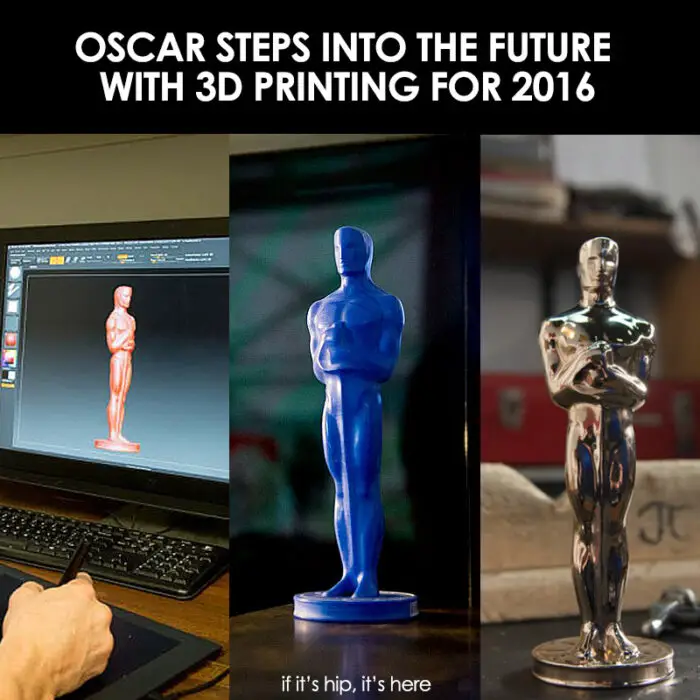Previously I featured a detailed post on the process of the making of the Oscar statuette by Chicago’s R.S. Owens & Company, as they had for the past 34 years. But as of 2016 Oscar has finally stepped into the future.
3D Printed Oscar Statuettes
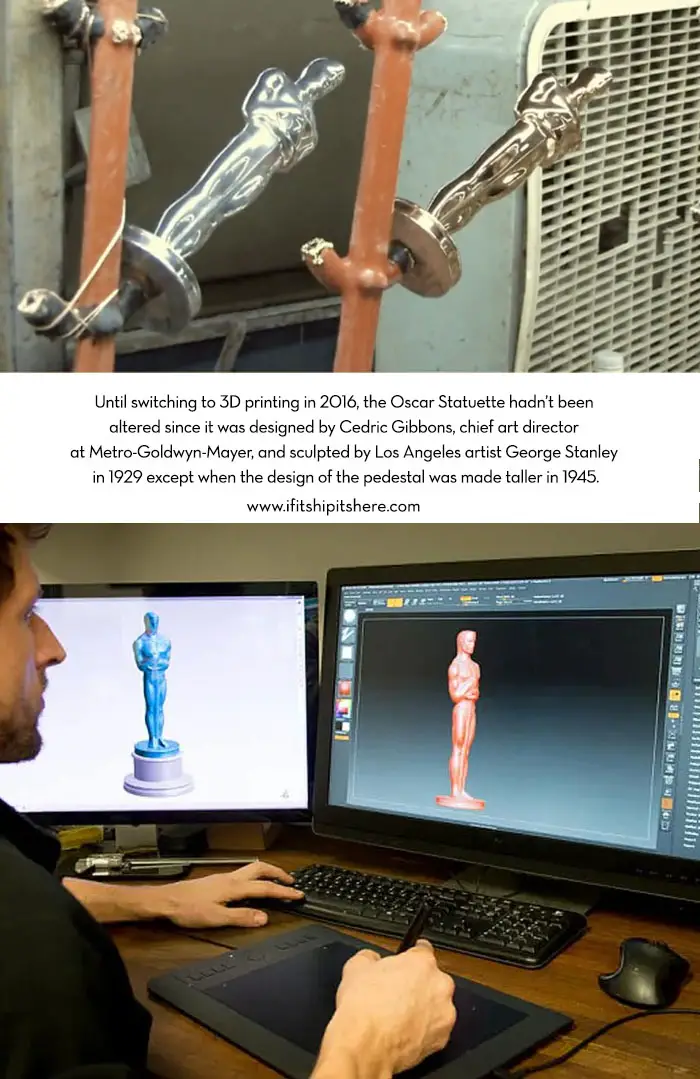
For the first time ever, this year’s statuettes utilize 3D printing technology and in this if it’s hip, it’s here exclusive I’m going to walk you through each step of the new and updated process of creating the coveted awards.
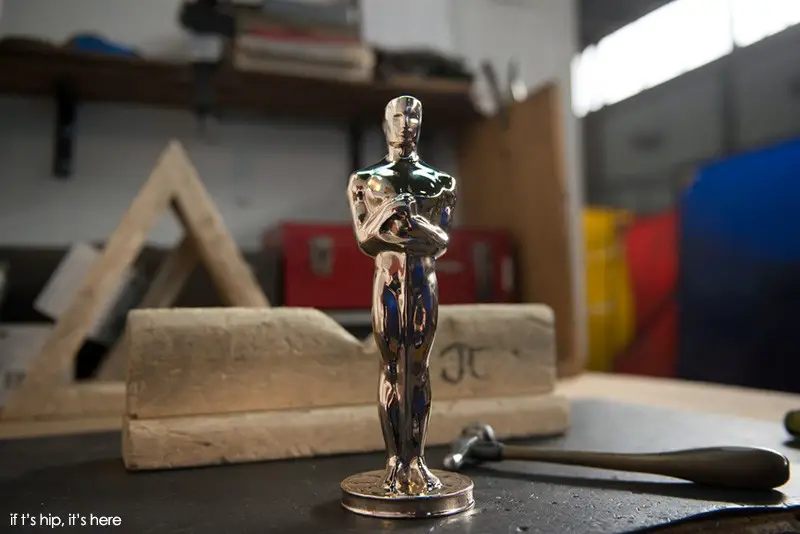
This year the iconic golden Oscar statuettes handed to winners at the Academy Awards will be cast in the shape of the original award designed by Cedric Gibbons and sculpted by George Stanley in 1929, but will have been made using the most modern of technologies. For the first time, 3D printing is playing a vital role in a revamp of the Academy of Motion Picture Arts & Sciences’ iconic trophy.
Art foundry Polich Tallix of Rock Tavern, New York has restored the traditional features using digital scans and 3D printers, and described the process as a “return to the Oscar’s fine art roots”.
“With the help of some 21st century technology, we’re able to honour the Oscar’s proud beginnings,” said Academy President Cheryl Boone Isaacs. “The new statuette exemplifies impeccable craftsmanship and the enduring nature of art.”
In 2015 the Academy sought to return to the original process of lost wax cast bronze for reasons of tradition and quality. They chose Polich Tallix as the place to start anew. While the essence of the sculpture has never changed, over the years small changes had crept in. Of particular importance was the subtle softening of the statuette’s features. After review and much conversation between the Academy and the foundry, it was decided to start by scanning a classic Oscar from 1928 as well as the modern Oscar used in 2015.
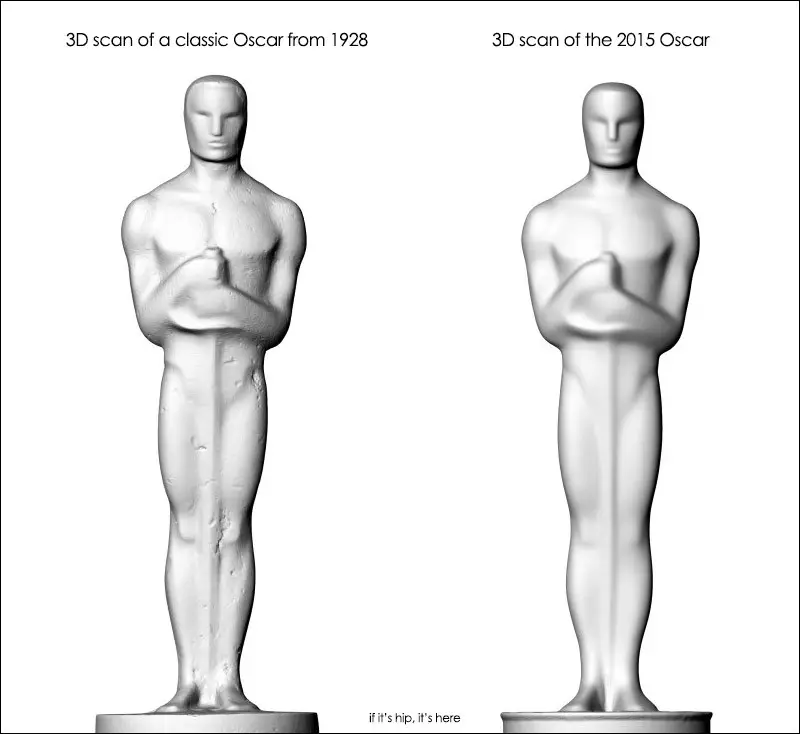
These two scans are blended using computers to make the 2016 design closer to George Stanley’s original Art Deco sculpture. The new Oscar’s dimensions remain the same at 13 ½-inches tall and weighing 8 ½ pounds.
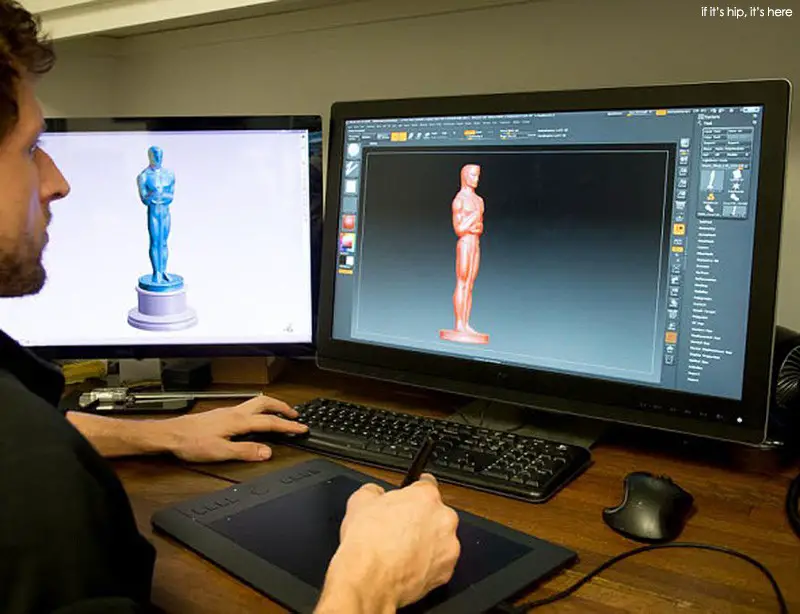
The 2016 Oscar marries the best features of the classic Oscar to the contemporary form of the modern Oscar through 3-D modeling. The only real differences lie in the “restored subtle features of George Stanley’s original sculpture”, which was based on sketches by MGM art director Cedric Gibbons.
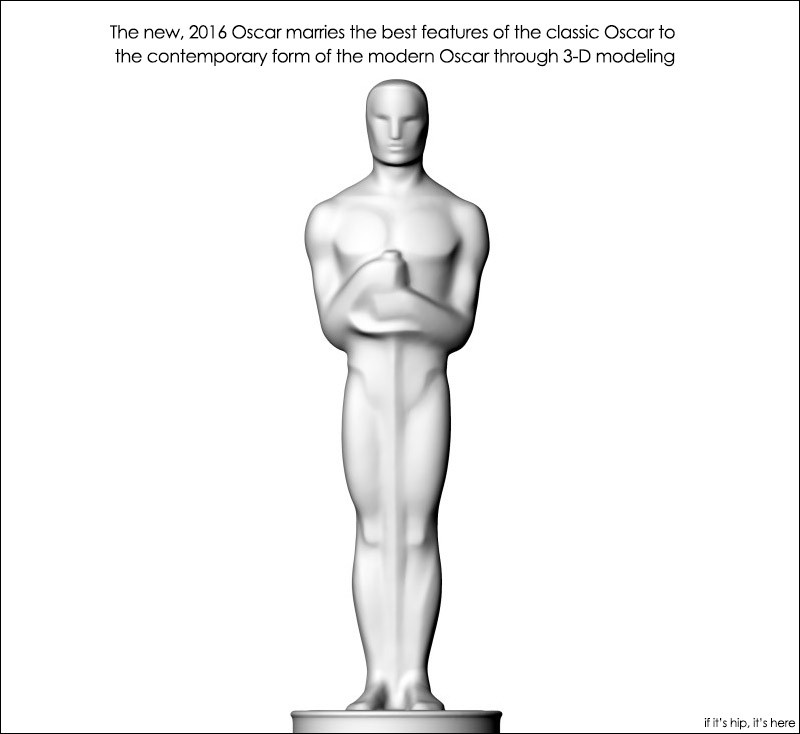
Below is the Step-by-Step process of making the new 2016 Oscar Statuette after the design was approved.
The new 2016 design is 3D printed in wax. A mold of the wax print is made and used to make the new modern wax version for each statuette.
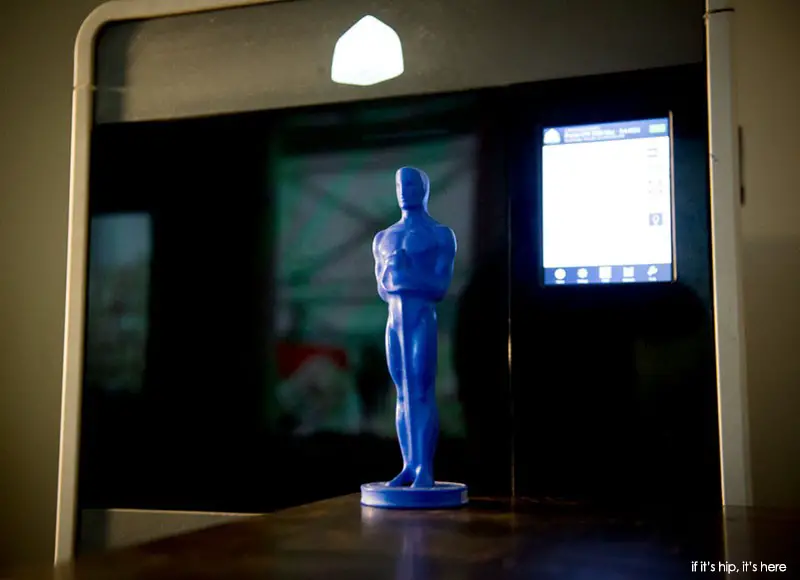
The waxes are then reworked out of the mold.
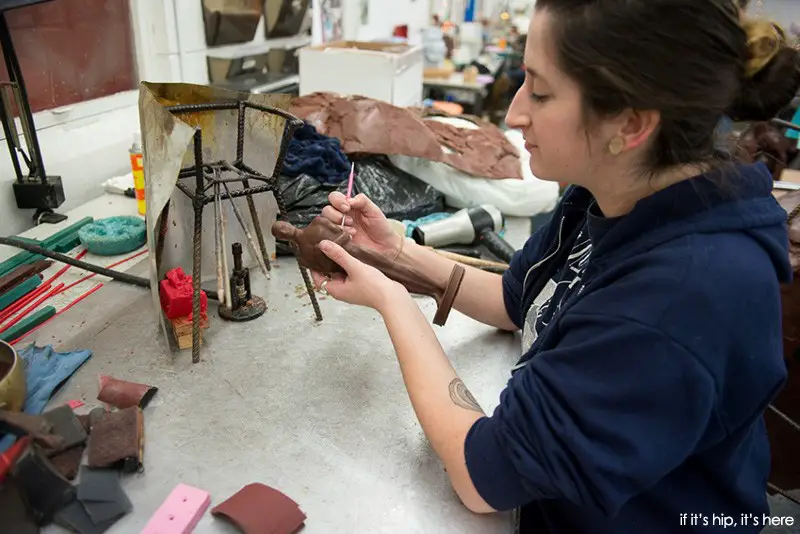
Next, they are then put on a gating system (or plumbing system) to make a ceramic shell.
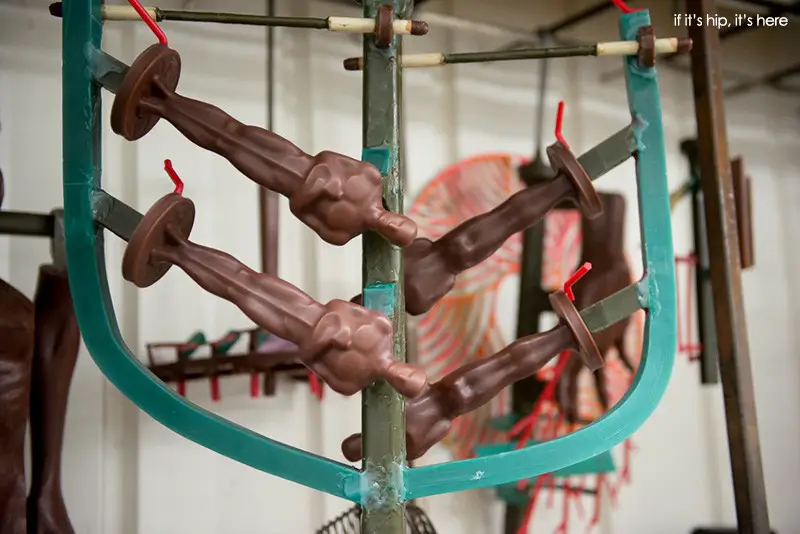
The waxes are each dipped in a ceramic shell slurry for ten coats. Once the shell is cured, it is fired in an oven at 1600° F.
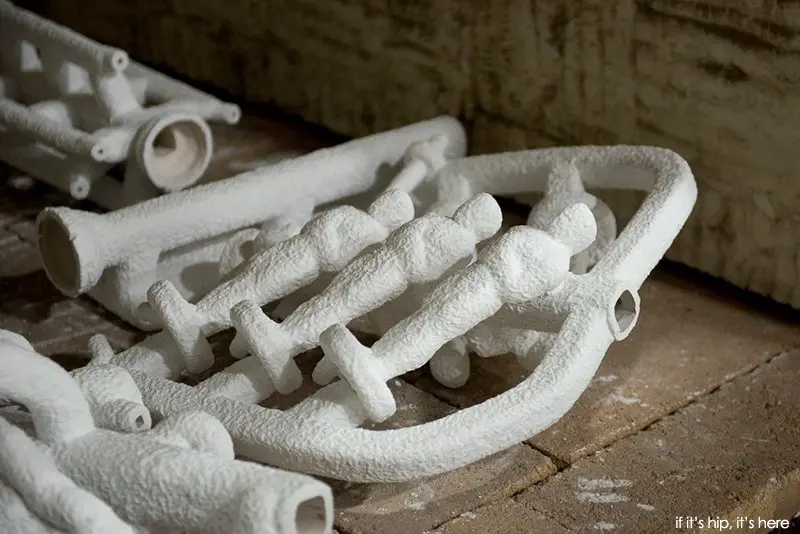
The hot ceramic shell is then prepared to receive the molten bronze.
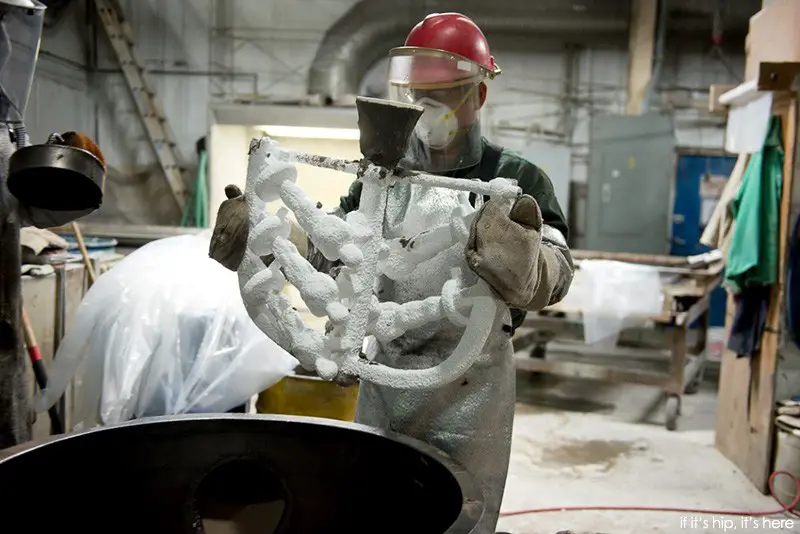
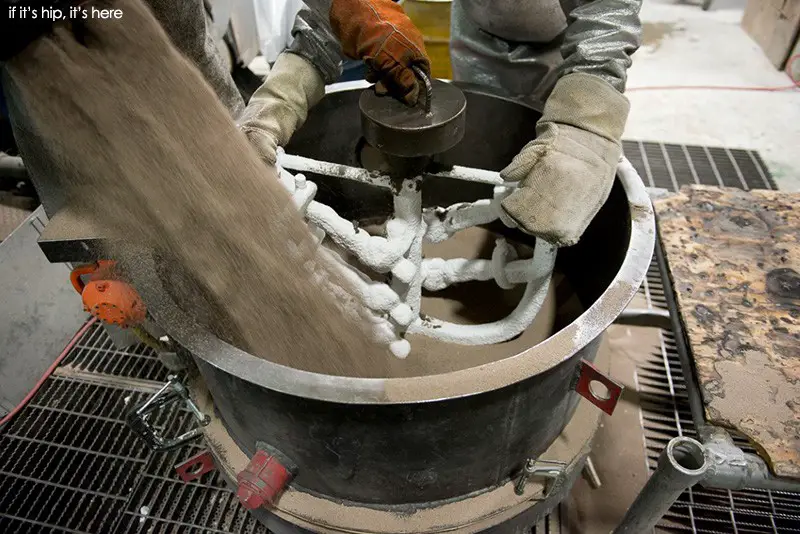
Bronze at 1860° F is then poured into the hot ceramic shell and allowed to cool overnight.
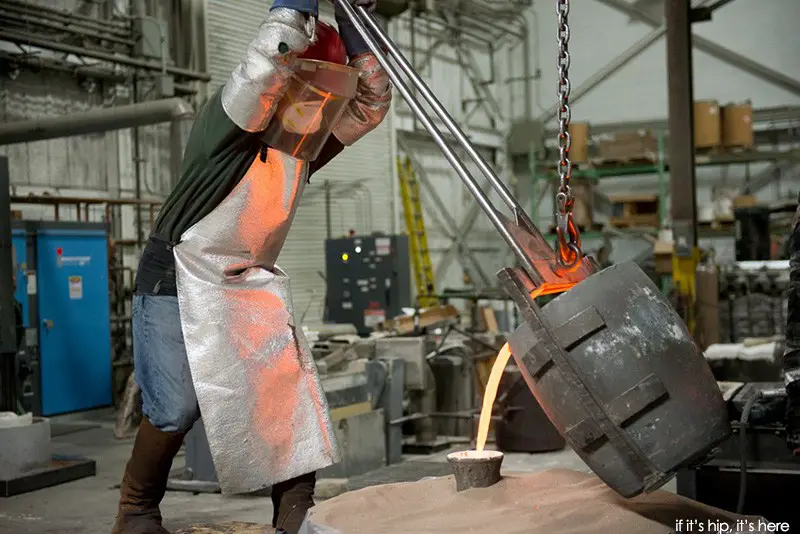
The next morning, the bronze castings are broken out of the ceramic shell (this is called divesting the casts).
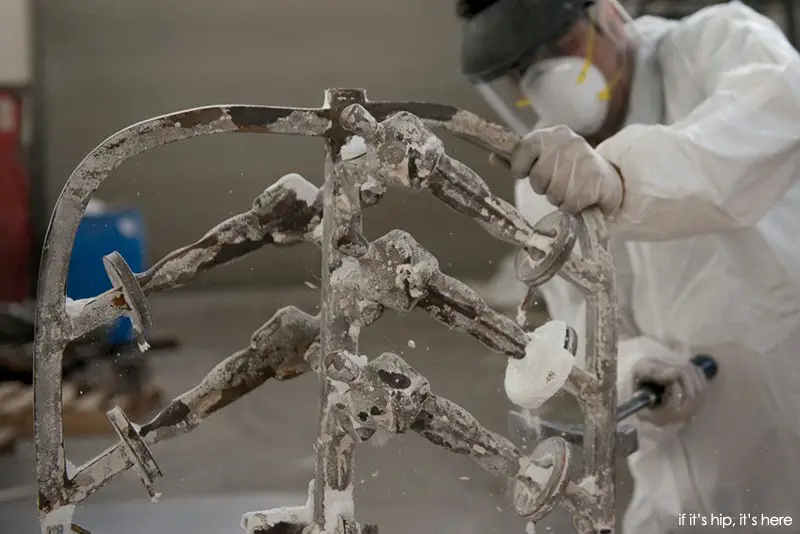
Then the plumbing system (or gates) that guides the metal into the body of the casting is cut off.
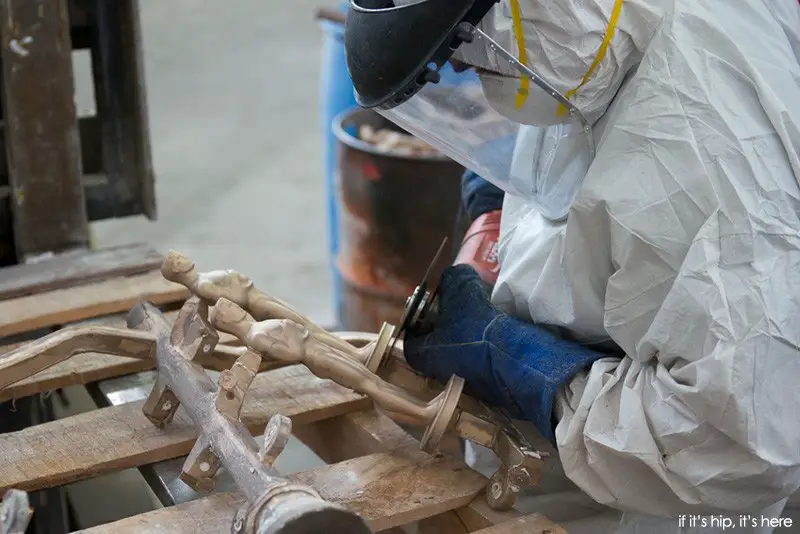
The fresh castings:
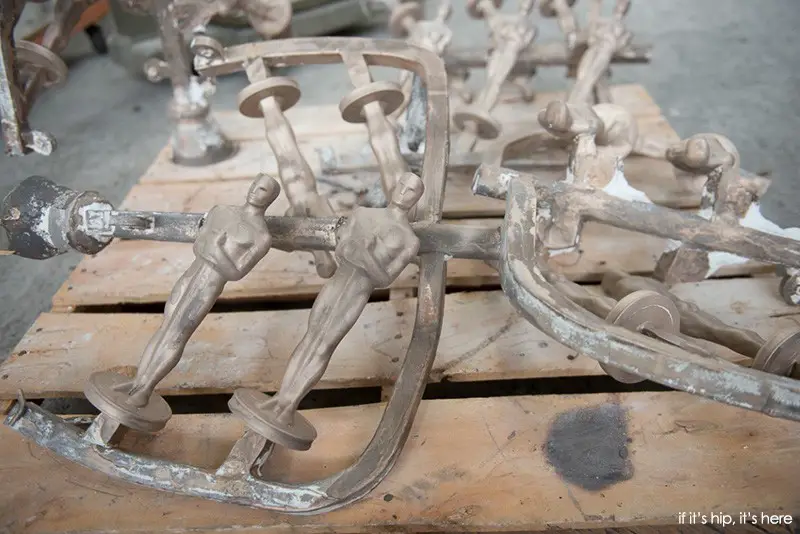
The fresh castings are then welded to smooth out rough edges and holes from removing them from the gating system.
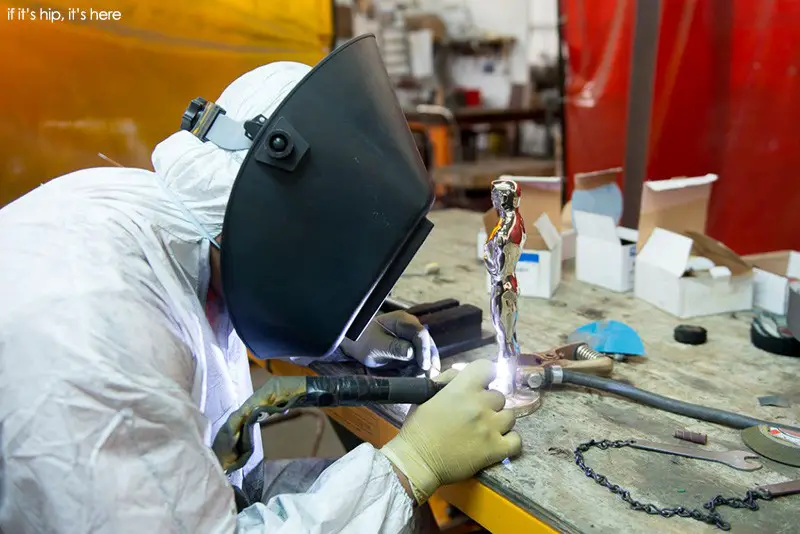
The castings are then sanded.
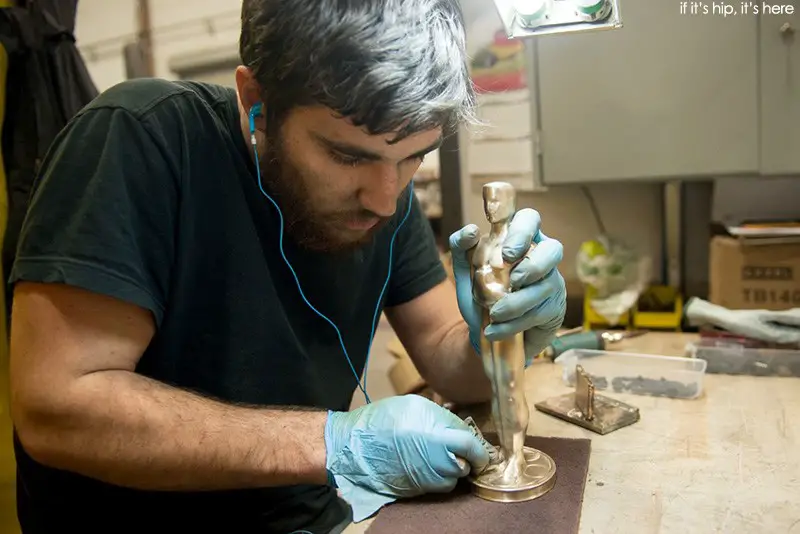
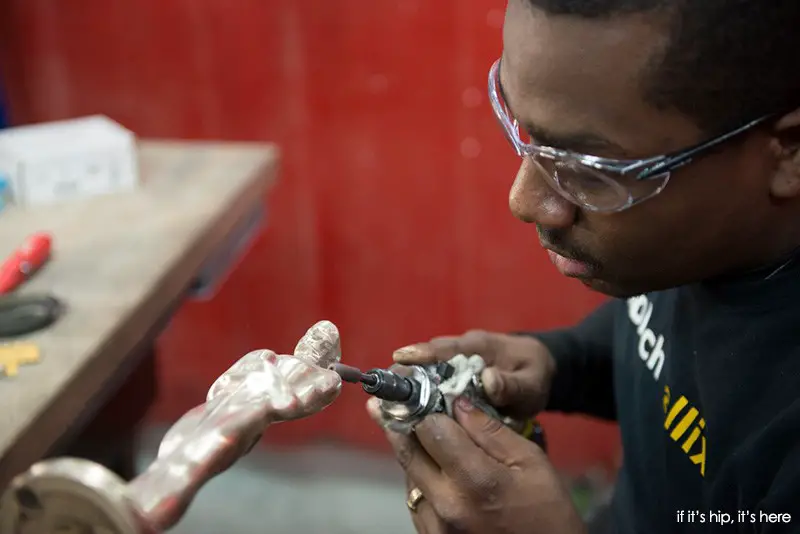
After the sanding they are electroplated with 24 karat gold at Epner Technology in Brooklyn using their “Laser Gold”, a 24 karat gold that was originally developed for Xerox® and later modified the process for NASA Spacecraft. Epner’s 24 karat gold is three times harder than anyone else’s pure gold. 84 year-old Dick Polich of Polich Tallix says Epner is “The only plater we ever use.”
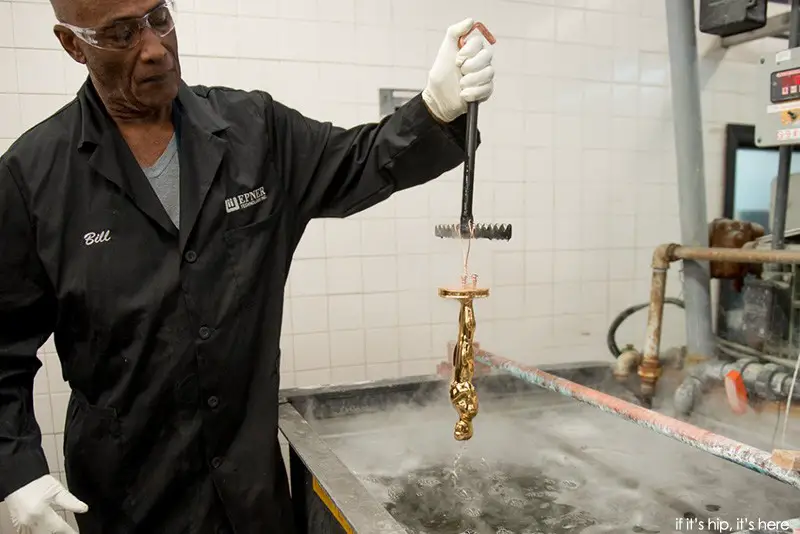
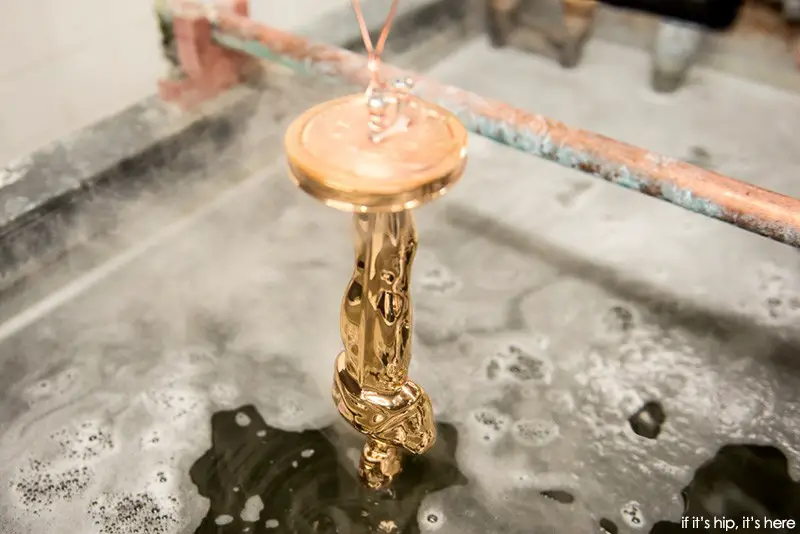
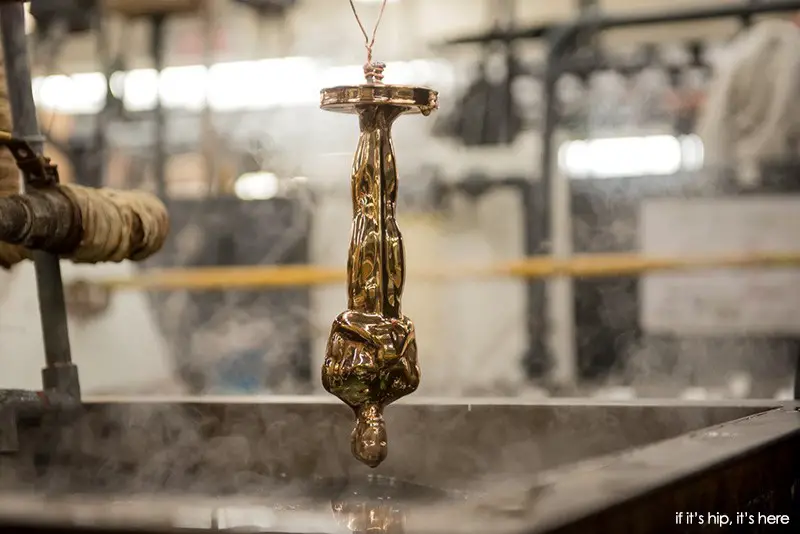
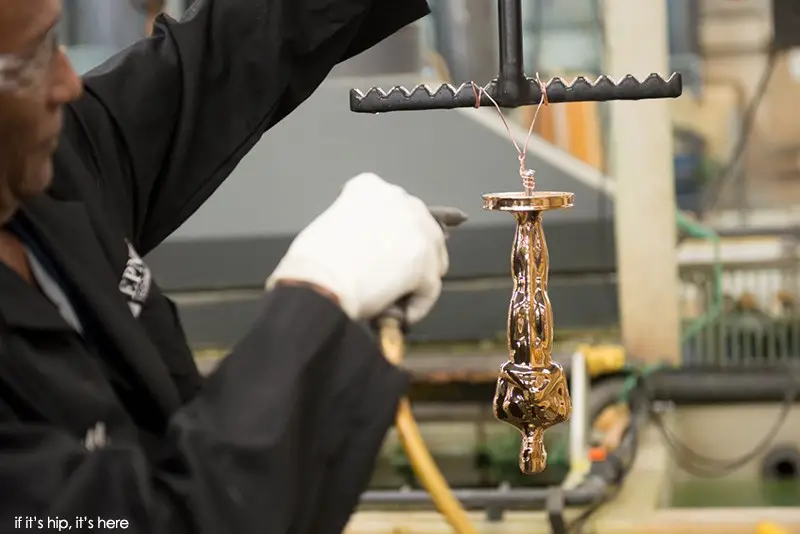
The solid cast statuettes are then buffed and polished to a mirror finish.
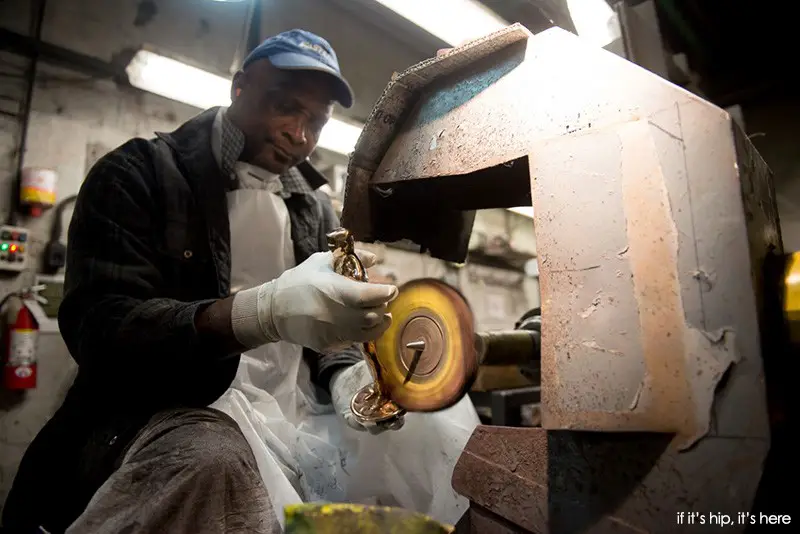
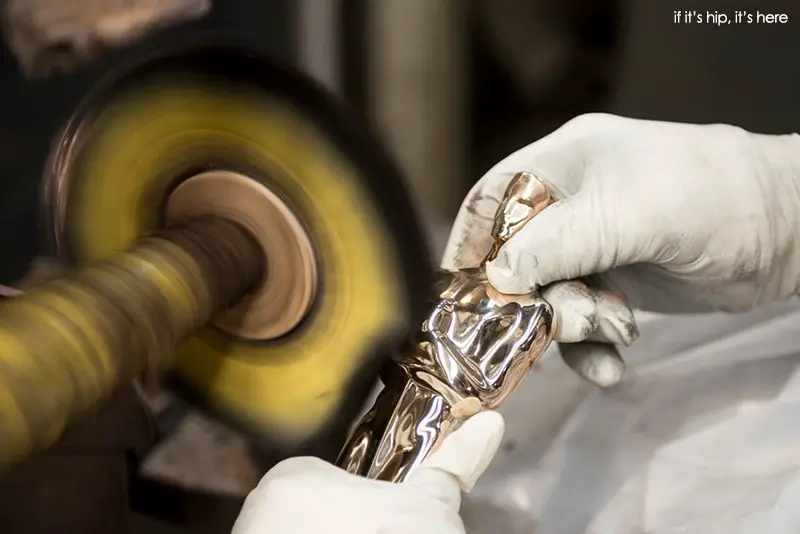
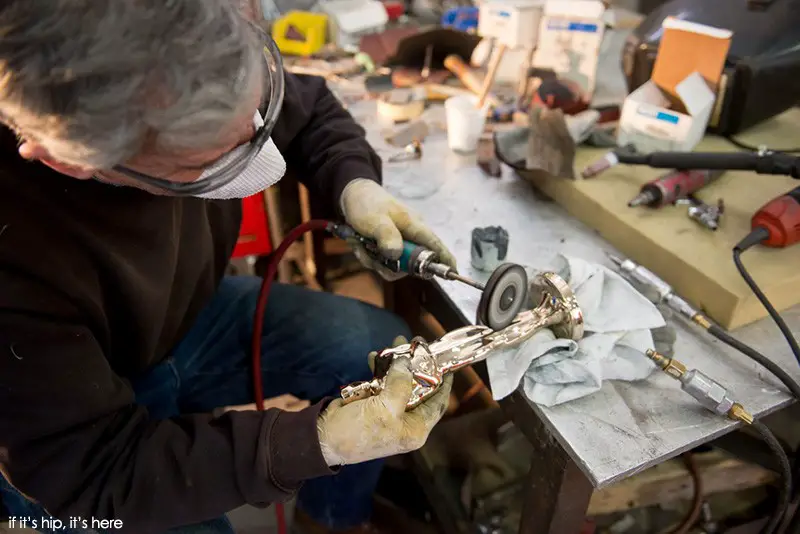
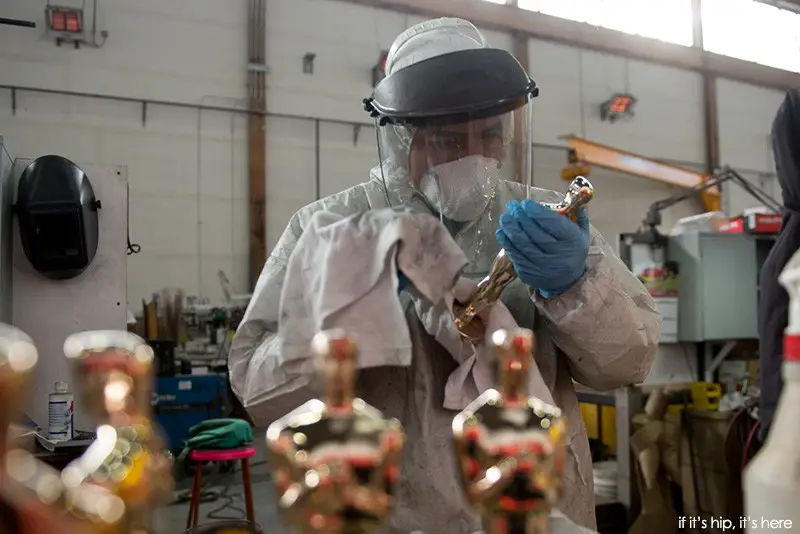
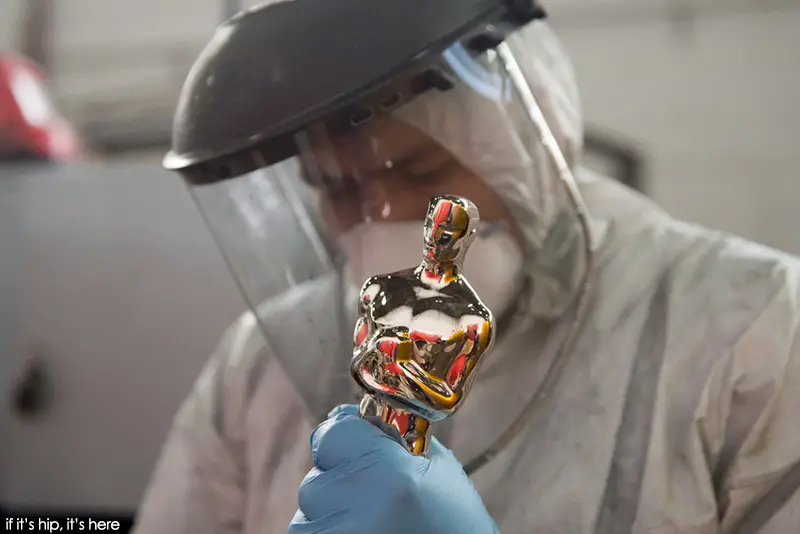
The polished statuettes are now ready for their bases.
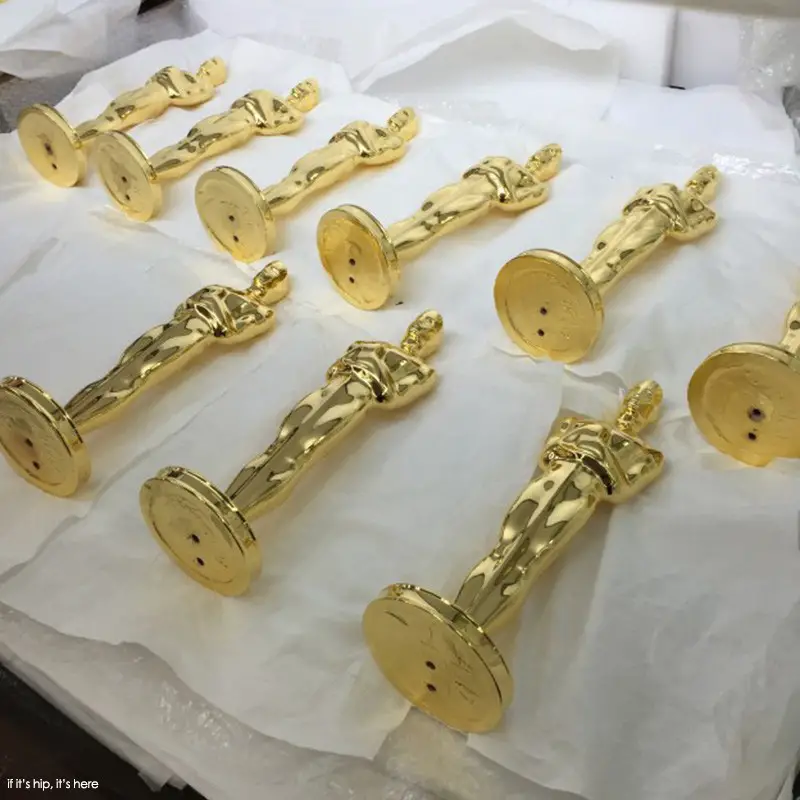
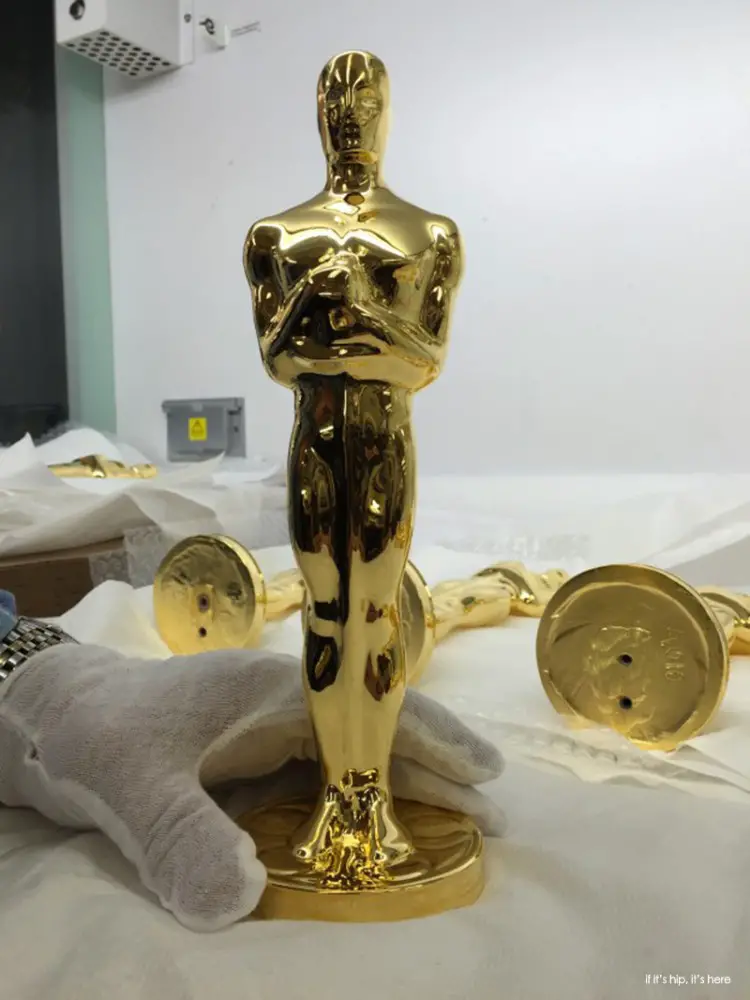
The statuette’s base is also cast in bronze, machined and sanded.
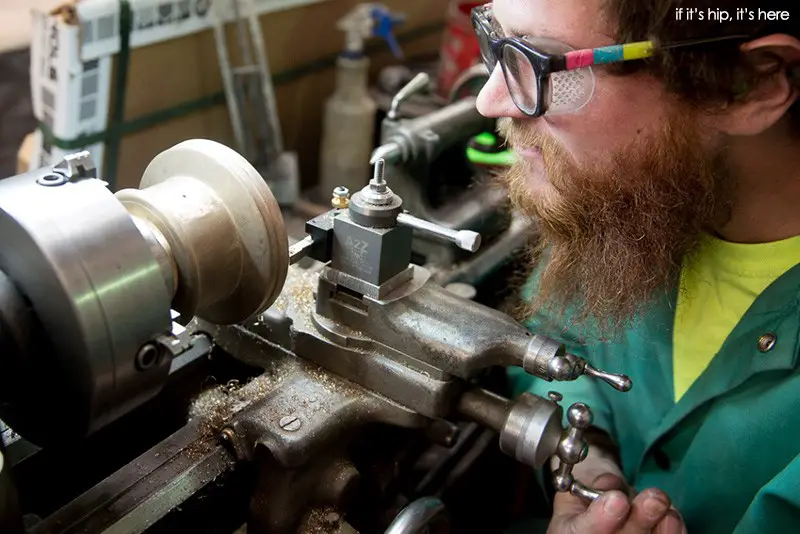
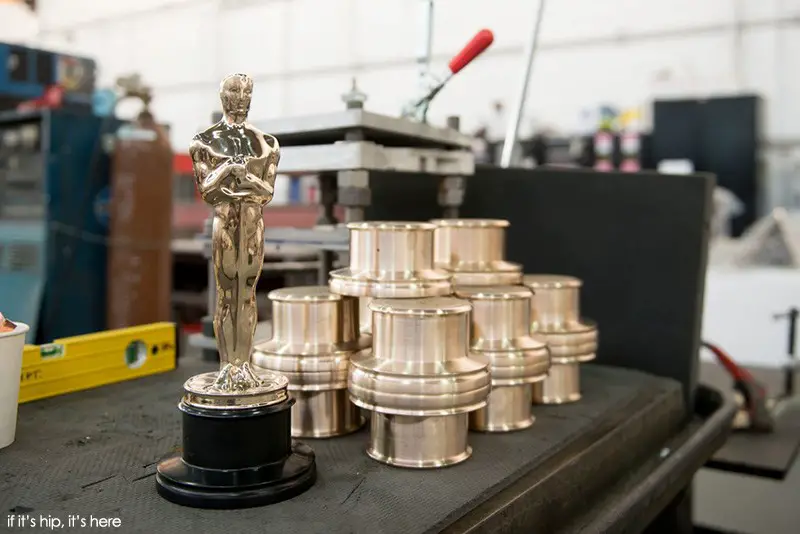
The base is then given a smooth, black finish.
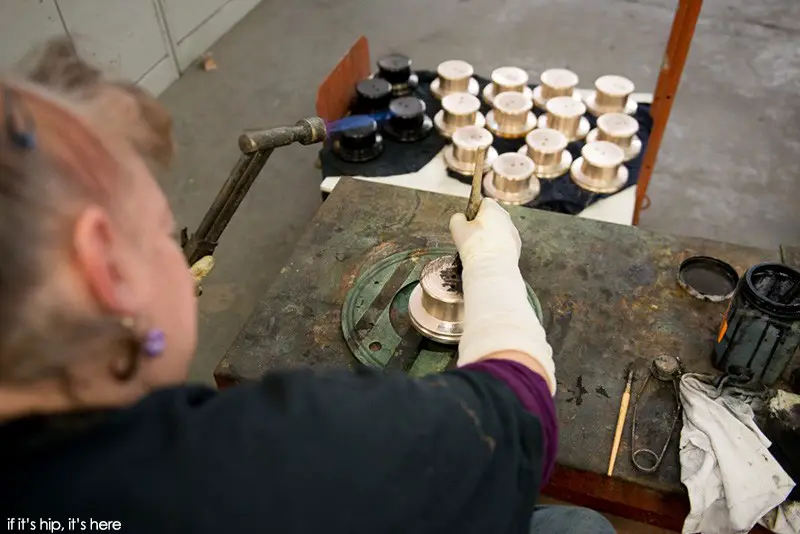
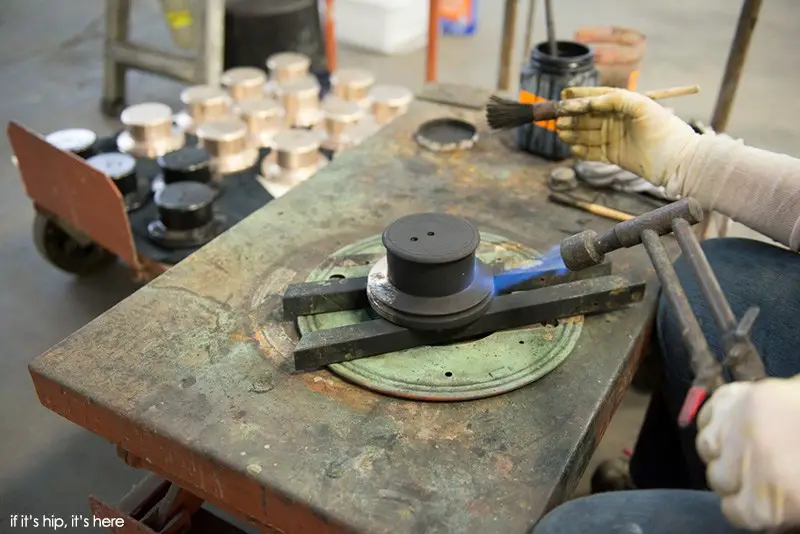
Engraved A.M.P.A.S. bronze tags are created for each statuette.
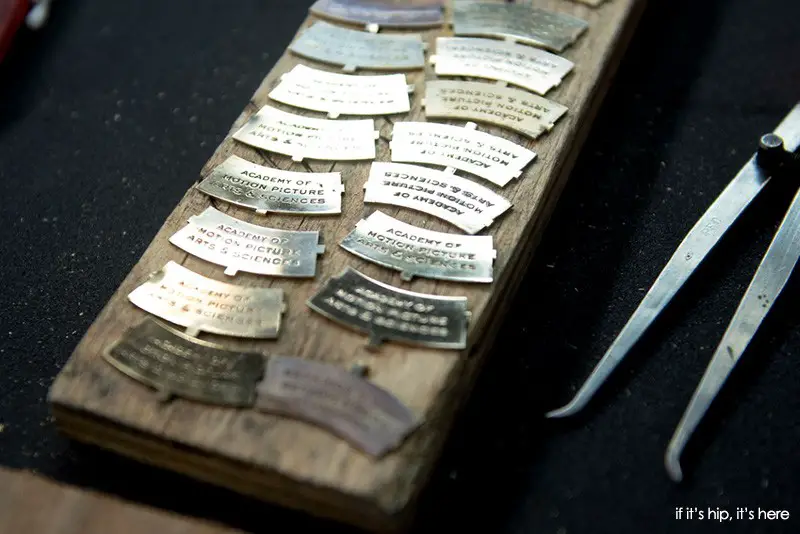
Then each A.M.P.A.S. tag is attached to the center of the base by hand.
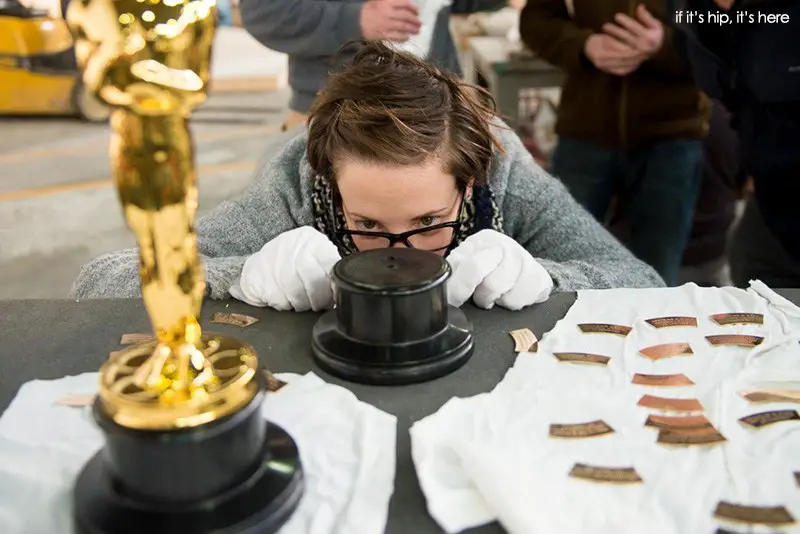
Each Oscar statuette is given a hand-stamped serial number.
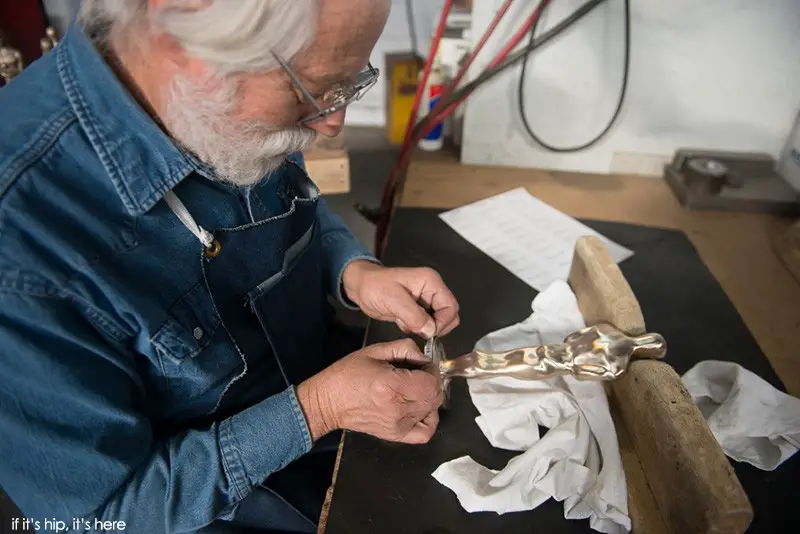

After the presentation, a mirror polished engraved bronze plate with each winner’s name and category will be attached in the center of the base.
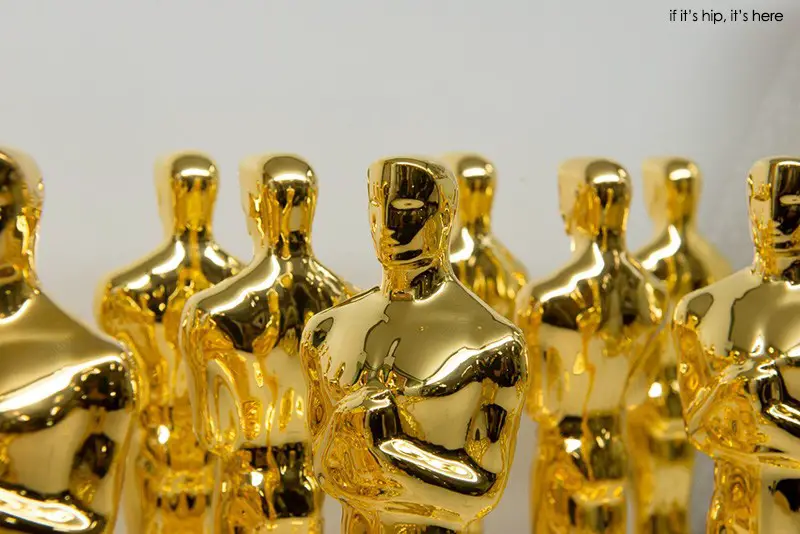
Production time for 50 statuettes is about three months. The completed gold plated statuette on its base is 13.5 inches tall and weighs about 8.5 pounds. The foundry is excited to be continuing this highly esteemed, long-established tradition of honoring accomplishment with a cast object created by an artist.
“With this project, we’ve been entrusted with continuing a great tradition,” said Dick Polich, Polich Tallix founder and CEO. “It’s a privilege to be able to bring our art experience and technical expertise to the Oscar.”
The final new 2016 Oscar Statuettes created with the use of 3D printing technology:

all images and information courtesy of Polich Tallix and Epner Technologies
